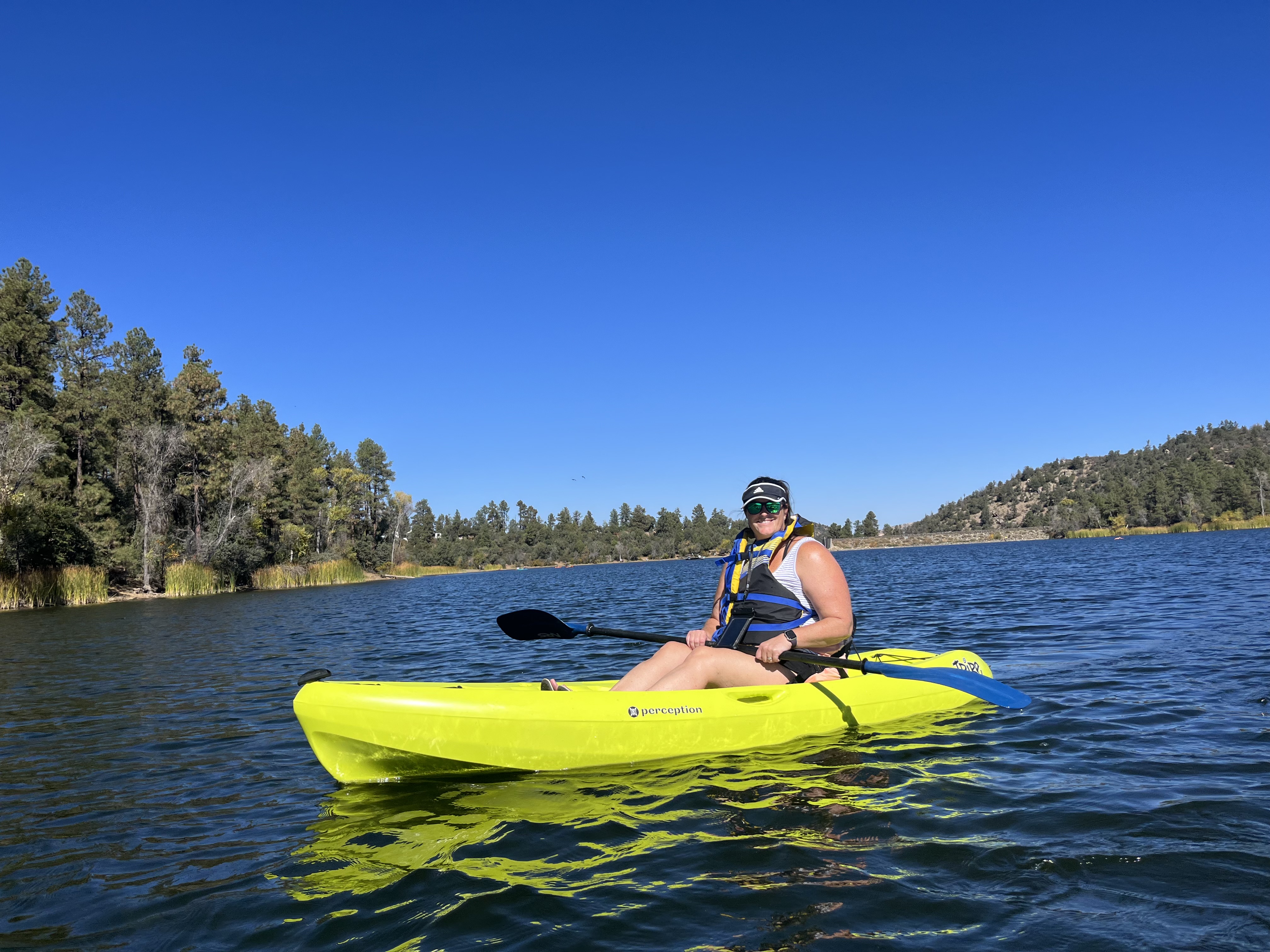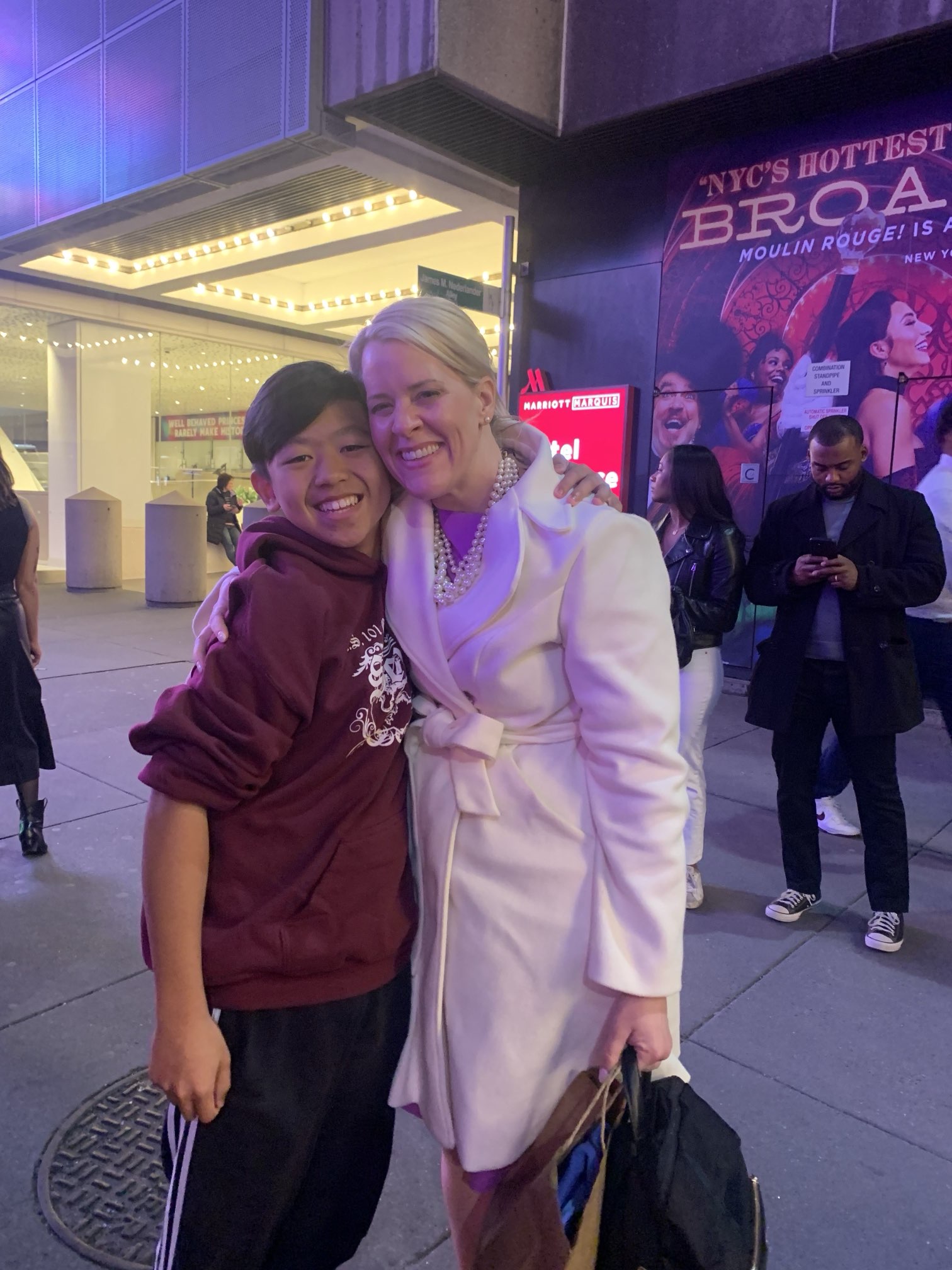 Before his transplant, Jayden’s kidney disease often left him tired on and off the court.
Before his transplant, Jayden’s kidney disease often left him tired on and off the court.
Three years ago, that wasn’t on Heather Manion’s radar, either.
A former thoracic transplant coordinator and ICU nurse, Heather was intimately familiar with the world of lung and heart transplants when she began her second career as a medical science liaison for the Transplant Diagnostics business of Thermo Fisher Scientific in 2021. Keenly aware of the lifesaving nature of transplant, she had long ago registered to be an organ donor after death.
But it wasn’t until she joined Thermo Fisher and began to learn more about the realities of kidney transplant that she began to seriously consider becoming a living donor.
Heather said she had thought about donating her kidney when first her mom’s friend and then her coworker’s husband needed one. “I’d always ask their blood type, but it was never AB so I said I couldn’t,” she recalls. She thought her rare blood type would hinder her from being able to donate, since only about 1 in 500 Americans have AB blood.
That was until Heather ran into a transplant lab director at a conference, who shared her own experience of signing up to do a non-directed kidney donation. While Heather’s blood type might not match someone she knew, surely there were hundreds if not thousands of people on the kidney transplant waitlist with AB blood, the lab director pointed out.
It’s little surprise this hadn’t occurred to Heather before, considering this type of “altruistic” or non-directed donation, like Heather’s blood type, is one of the rarest forms—comprising less than 10% of all living donations each year.1
After that fateful conversation, Heather started researching kidney transplant programs in earnest and ultimately put in a request at one of the top transplant centers in Phoenix, Arizona. She soon received a call from a Living Donor Advocate and quickly learned the process of becoming a living donor is quite rigorous—involving conversations with several health care professionals and a social worker, as well as a multitude of tests and evaluations.
As Heather was aware, blood type is one factor that goes into matching donors with patients in need. But it’s not the only one by far. Other key factors include human leukocyte antigen (HLA) tissue typing and antibody screening, using tests like those made by Thermo Fisher Scientific, to make sure the recipient’s immune system won’t attack the donated organ, as well as ensuring the donor and recipient have similar body and organ sizes so the donated organ will fit and function well.2
For living donors, the evaluation also extends beyond the physical.
“They asked me tough questions like, ‘What if your kidney goes into a patient and it fails?’ or ‘What if the recipient dies?’” Heather recalls. “Their job is to make sure you are mentally, emotionally, psychologically, and physically healthy enough to donate as well as 100% sure of your decision to do so.”
Partway through her evaluations, Heather paused the process in response to pushback she received from family and colleagues. “It made me second-guess whether I was being impulsive,” she explains. “I wanted to step back and make sure I was making the right decision.”
After further contemplation and discussions with her children, Heather ultimately decided to move forward.
As part of the process, she was given the choice to donate directly to someone on the transplant center’s waiting list or to go through the National Kidney Registry (NKR), an organization that works with over 100 transplant centers around the country to help facilitate paired and altruistic donations, and offers certain protections for living donors and their families, including Donor Shield and the Family Voucher Program.
“Once I learned about the NKR, I felt safer because I knew I had the protection of NKR and ‘extra points’ from UNOS that would put me higher on the waiting list if I ever needed a kidney myself. It’s dual protection,” Heather explains.
With the decision made to donate through the NKR, she was officially approved as a living donor on December 28, 2022.
The very next day, she was off to a charity event for work in California where she shared the news of her approval to become a living donor with someone who knew a family whose child needed a kidney. That child was 12-year-old Jayden Li, the boy from New York mentioned above, who had been struggling with kidney problems since age 4.
Heather reached out to Jayden’s mother soon after, and while she was not a match for Jayden, she offered to give him one of her Family Vouchers through the NKR, knowing that once Jayden used his, her family’s remaining vouchers would be null and void.
Her sister-in-law in Seattle was the first to get tested, only to find out she wasn’t eligible. Next, a friend stepped up, but her kidney wasn’t the right size. Her cousin was the next to start the process, but before the cousin even received a call back from the transplant center to begin testing, Angela received a surprise phone call. A match had been found.
“I was at school when they called me, and I was shocked. I was expecting to get a kidney from someone that I knew. But they said they searched the entire registry, and I was the best match [for Heather’s kidney],” recalls Angela. “This was at the end of January, and they wanted to do the surgery in early March. I had a month and a half to kind of figure everything out. It was pretty exciting, but I hung up the phone thinking ‘OK, this is really happening. We’re doing this!’”
In another unexpected and unknown twist of fate on March 8, 2023, Heather and Angela entered the same Phoenix hospital, soon to have more in common than just the same blood type. Heather would have surgery as the donor, while, hours later, Angela would then go through the procedure of accepting her new kidney.
 Angela is making the most of her life post-transplant
Angela is making the most of her life post-transplant
“I just said, ‘Hi, my name is Heather; I believe you have my kidney. I hope you're happy, and I hope you're healthy. And if you ever want to meet up, please feel free to reach out.’ She didn’t respond for a day or so. Then, I ended up getting a [nearly] two-page letter from her, which was just the sweetest thing, and I cried,” Heather recalls.
The two have since had breakfast and gotten together a couple of times. “It’s like talking to a long-time friend,” says Angela.
“She’s the right to my left,” says Heather. “Funny, physiologically, I was probably the perfect donor. My left kidney is the size of a man's kidney, and my right kidney was the size of a woman's kidney. So, they took my lady kidney, so everyone makes fun of the fact that I still have a man kidney,” the fashionable, self-professed “girly girl” laughs.
 Heather and Jayden
Heather and Jayden
Today, Heather, Angela and Jayden are living full, healthy lives—and Heather considers her family extended by two full units.
When asked how she responds to those who learn about her donation and question her decision to donate to a complete stranger, Heather says, “People are kind. And I think people would do more if they just knew. I think I would have done it earlier, had I just known.”
Say "YES" to donation!
You can give the gift of life to help someone like Angela or Jayden. Learn more about organ donation or visit the National Donate Life Registry.
This story may contain general information relating to various medical conditions or their treatment. The information in this article is provided for informational purposes only and is not meant to be a substitute for advice provided by a doctor or other qualified health care professional. You should always consult with a doctor or other health care professional for medical advice or information about diagnosis and treatment.
Citations
1. “Donor : Living Donor Relation to Recipient by Donation Year (2022 - 2023),” Organ Procurement & Transplantation Network. https://optn.transplant.hrsa.gov/data/view-data-reports/build-advanced/ [Accessed 9/13/24].
2. “Matching Donors and Recipients,” OrganDonor.gov. https://www.organdonor.gov/learn/process/matching [Accessed 9/13/24].

